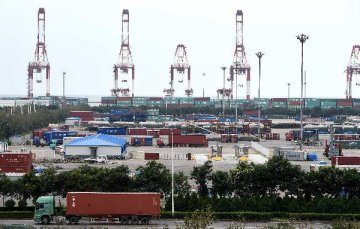
Zhao Kai, vice president of China Association of Circular Economy, introduced in 2015 China Circular Economy Development Forum that, green industries require annual investment of at least 2 trillion yuan in the “13th Five-year Plan” period. China needs to build up a green financial system, study and formulate specialized policies to encourage green bonds, and introduce massive social capital into green industries. Meanwhile, guiding funds can be established for circular economy to support small and medium enterprises in green industries, which are at the initial or growth stage.
Green development path of “13th Five-year Plan” gradually clarify
Based on Suggestion on Formulating 13th Five-Year Plan for National Economy and Social Development by the Central Committee of the Communist Party of China issued on Nov. 3, China will support green and cleaner production, enhance green upgrading of traditional manufacturing industry, promote establishment of industrial system for green and low-carbon cycling development, and encourage renovation and transformation for enterprises’ technologies and equipment. Green finance should be carried out to establish green development funds.
Zhao also pointed out that green industries require annual investment of at least 2 trillion yuan in the “13th Five-year Plan” period to realize the goal of green development, and promote ecological civilization according to estimation; the future trend is to lever the development with limited government capital, which is also a challenge for China’s transformation.
Guiding funds suggested to be established for circular economy
Song Li, director of Economic Research Institute under Academy of Macroeconomic Research, NDRC, mentioned in the forum that, during developing process for circular economy in recent years, government investment accounts for round 20 percent, with investment from enterprises of about 70 percent.
According Song’s analysis, government investment proportion is basically stable based on dynamic view, but the proportion self-raised by enterprises increases, with declines in banking loans, which means that the existing or traditional financial system cannot well support the development of circular economy.
Ma Jun, chief economist of Research Institute of The People’s Bank of China and director of Green Finance Commission of China Society for Finance and Banking, appealed in the forum that we should build up a green financial system to encourage and introduce massive social capital into green industries, with two goals of improving return rates of green projects and lowering return on investment of pollution projects.
Ma previously introduced that, according to western experience, green financial system includes equator principles, green credit and securitization, green industrial funds, green security funds, green bonds, green banks, green insurances, establishment of coal financial system, legal liabilities on environment of financial institutions, environmental factors considered by institutional investors during their decision-making process, environmental factors involved in credit rating, green social responsibilities that listed companies should follow, as well as formation of green institutional investors network.
Song Li said that we can use the successful experience of existing strategic emerging industries, suggesting competent authorities to set up circular-economic funds or guiding funds. “Central government can guide the development of local areas through contributing capitals into local organizations,” he added.
Meanwhile, the Small and Medium-Sized Enterprises Development Fund, which is being established by the government, will also target small and medium sized enterprises in green industries.
Sun Zhi, an official from the ministry of finance, introduced at the forum that the central government will collect and contribute 15 billion yuan to attract private and state-owned enterprises, financial institutions, local governments to participate in the Small and Medium-Sized Enterprises Development Fund, which primarily aims at supporting small and medium sized enterprises at start-up stage.
Sun Zhi added that this fund covers a wide range of sectors, including resource and energy saving small and medium sized enterprises in circular economy. While other circular-economic enterprises can also get support from the fund if they meet the requirements.
Special green-bond policy under study
“We will formulate special green-bond policy as soon as possible to promote the development of circular-economic industries. In China, there’s no clear definition or special policy for green bond currently, but the government has committed to developing green economy since the birth of corporate bond” said Sun Xuegong, deputy director of the institute of economics of National Development and Reform Commission.
“In the past, we had issued some bonds for green industries. If there are official definitions or classifications, those bonds could also be classified as green bonds,” explained Ma Jun.
Ma Jun believed that green bonds could not only provide new financing channels, but also solve the problem of mismatch of duration.
“In average, the duration of bank liabilities is just six months. If banks granted medium-long term green loans, they will be exposed to serious risks on duration mismatch. But if banks are allowed to issue bonds with duration of ten or five years, the risks will reduce sharply, and their long-term lending ability will improve”. Ma Jun explained.
Ma Jun analyzes that green bond could also lower financing cost. “If we are able to incubate a large number of green bond investors, the demand for green bonds will surge, which will reduce financing cost. We also could provide further policy supports, such as applying similar tax exemption measures of government debt on green bonds, which could also cut green financing cost”.
Ma Jun suggested that regulatory authorities should issue guidances on green bond and set out clear definition, categories and supporting policies of green bond.
Translated by Adam Zhang and Jelly Yi
























Latest comments